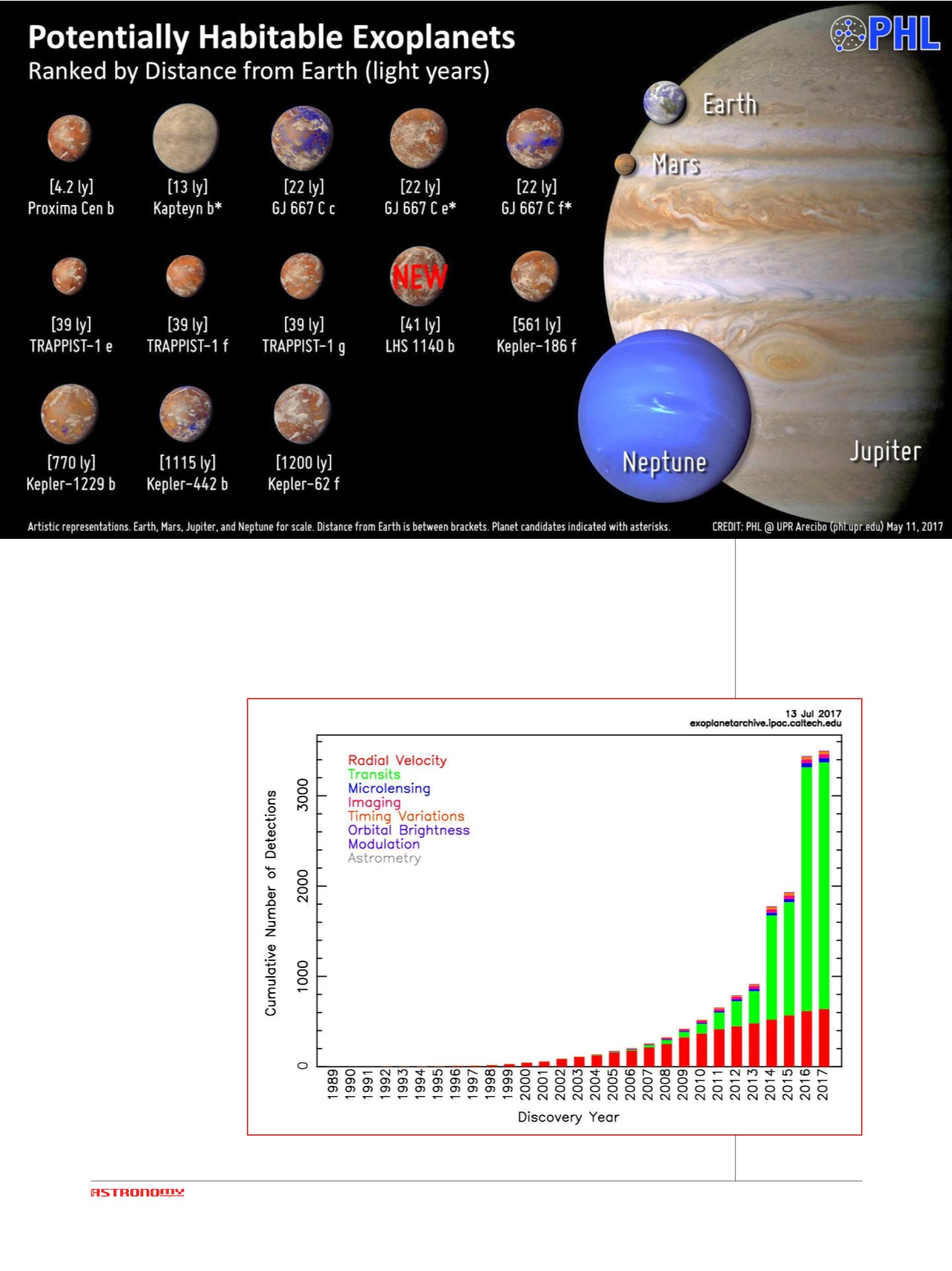

SEPTEMBER-OCTOBER 2017
A
bove, the po-
tentially habit-
able planets closest
to Earth. [PHL @
UPR Arecibo]
Below, the increase
in the number of
discovered exo-
planets. [Caltech]
will be to classify the planets according to
their physical properties. The roughly 3500
extrasolar planets confirmed to date have
shown that, lacking accurate knowledge of
their structure and that of their stars, it is
often difficult to distinguish between an
Earth, a super-Earth and a mini-Neptune.
As we do not have examples of the latter
two planetary classes
in our solar system
(which are rather
prevalent in our Gal-
axy, however), we
do not know the de-
gree to which they
may appear similar
to each other at
large distances, nor
even if there are ob-
vious borders be-
tween the classes, or
if one class blends
into another so that
there are ‘hybrid’
planets.
As one may guess, a
planet’s classifica-
tion, then, is made
even more complex
by the possible pres-
ence of an atmo-
sphere, whose basic
properties (size, den-
sity and composi-
tion) cannot be derived from transit pho-
tometry. In spite of all these difficulties,
the precision of PLATO’s measurements
and the follow-up observations with large
telescopes will allow us fairly reliably to
classify tens of thousands of planets and,
knowing the age of the systems they be-
long to, to understand how each planetary
















